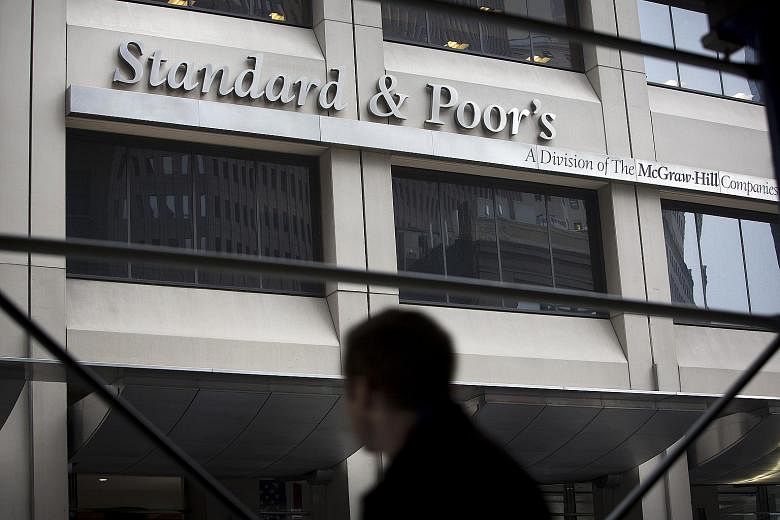NEW YORK (BLOOMBERG) - So much for breaking up the credit ratings triopoly.
Standard & Poor's, Moody's Investors Service and Fitch Ratings are maintaining their grip on the business for US credit ratings, according to the US Securities and Exchange Commission.
Of the US$5.9 billion in revenue generated by 10 rating firms recognized by the US government in 2014, the most recent data available, 94.3 per cent was pulled in by the Big Three, according to an annual SEC review. That's slightly higher than in 2011, a year after Congress voted for policies designed to open up the market to smaller competitors.
S&P, Moody's and Fitch issued 95.8 per cent of ratings outstanding as of December 2014, the SEC said in its review. That compares with 98.8 per cent in 2007.
Representatives of the three companies didn't immediately respond to requests for comment.
Credit ratings are assigned to debt issued by entities ranging from national treasuries and local municipalities to corporations and bundles of mortgage bonds. They are meant as an indication of a borrower's likelihood of default.
The SEC's findings echo those of the European Securities and Markets Authority, which reported this month that out of more than two dozen credit rating firms registered in Europe, S&P, Moody's and Fitch generated 92 per cent of the industry's revenue from ratings and services such as data and analytics.
The European payment structure now requires issuers to hire a different rating company every few years, unlike the US model where issuers pay a ratings firm of their choosing to assess their debt.
Policies mandated by Congress in the Dodd-Frank Act were designed to foster a more competitive and transparent ratings process. Some policies and disclosure rules could help smaller bond graders "attract attention" and enhance their ability to "develop a reputation for producing quality" credit ratings, according to the SEC.
Newer and smaller firms have made progress breaking into some segments of financial markets that have relied on ratings, such as asset-backed debt. In the ratings of home-loan bonds, DBRS Ratings has increased its market share to 76 per cent from 49 per cent in 2011, according to newsletter Asset-Backed Alert. Over that period, the position of S&P has fallen to 13.4 per cent from 40 per cent.
"Changes in the market won't happen overnight," said Larry White, a professor of economics at New York University's Leonard N Stern School of Business. "You also have to remember, that these companies' reputations may have been besmirched in areas such as mortgages and structured finance, but not necessarily in markets like corporate bond issuance."
In a companion report on compliance with federal rules, the SEC listed two instances of improper practices settled this year. They included "fraudulent misconduct" in S&P's ratings of certain commercial mortgage-backed securities and failure by DBRS to properly surveil ratings on certain residential mortgage bonds. S&P was suspended from a portion of the CMBS market for a year and paid almost US$80 million to settle that case, while it cost DBRS almost US$6 million.
Among other findings, the SEC staff recommended that one of the smaller ratings companies, which it didn't name, "review whether its analysts engaged in improper sales and marketing activity."

